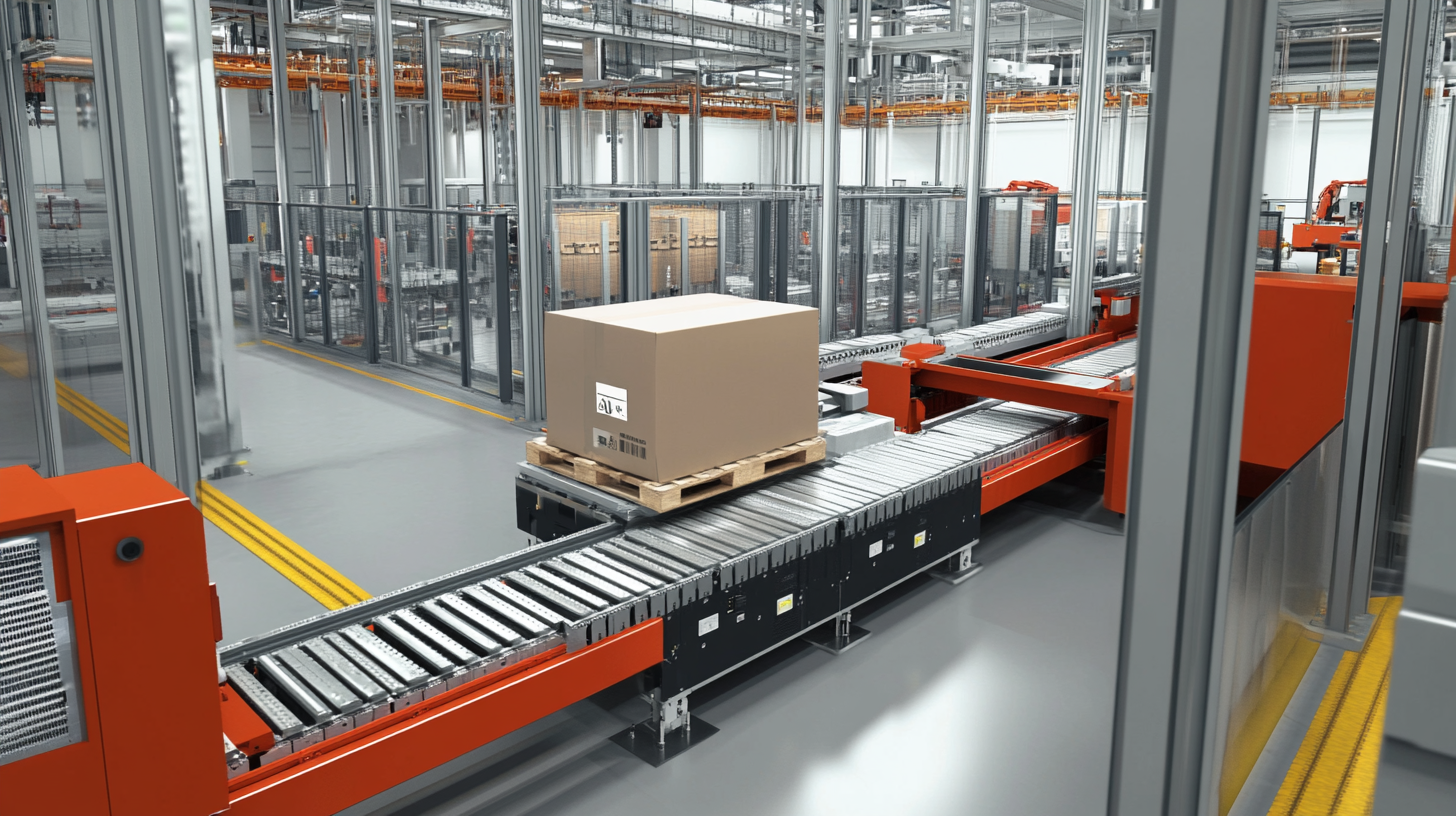
-
Home
-
Products
-
Application
-
Documents
-
News
-
Blog
-
Blog
-
Sinsegye
Leave Your Message
-
Wechat OA

-
 Baijia Hao
Baijia Hao



 Baijia Hao
Baijia Hao

In the ever-evolving landscape of manufacturing, the integration of technology has become paramount for achieving efficiency and productivity. Among the myriad of technological advancements, Direct Automation PLC stands out as a revolutionary solution that transforms traditional manufacturing processes. This sophisticated control system enables manufacturers to automate tasks with precision and reliability, resulting in reduced operational costs and enhanced workflow. By seamlessly connecting various machinery and equipment, Direct Automation PLC empowers businesses to monitor and manage their operations in real-time, leading to improved decision-making and performance optimization. As industries face increasing pressure to enhance their competitiveness, understanding the benefits of incorporating Direct Automation PLC into manufacturing processes is crucial. In this blog, we will explore the top 10 benefits that this technology can bring to your manufacturing operation, illustrating why it is an indispensable component for modern production environments.

Integrating Direct Automation Programmable Logic Controllers (PLC) into manufacturing processes offers a plethora of advantages that significantly streamline operational efficiency. According to a report by MarketsandMarkets, the global industrial automation market is projected to reach over $295 billion by 2025, with PLCs playing a pivotal role in this growth. One of the key benefits of adopting Direct Automation PLC is the reduction in time and costs associated with production. By automating routine tasks and enabling real-time monitoring, manufacturers can achieve up to a 30% increase in productivity, optimizing resource utilization and minimizing downtime.
Moreover, Direct Automation PLC enhances the precision and quality of manufactured products. A study by the International Society of Automation revealed that companies embracing PLC technologies reported a 20% improvement in product consistency and a 15% reduction in defect rates. This shift towards automation not only becomes a competitive advantage but also fosters a safer working environment by minimizing human error and addressing safety concerns proactively. Enhanced data collection facilitates informed decision-making, allowing manufacturers to adapt to market demands swiftly and efficiently, thereby solidifying their standing in the ever-evolving industrial landscape.
This pie chart illustrates the top benefits of integrating Direct Automation PLC in manufacturing processes. Each segment represents a key advantage that contributes to overall efficiency and effectiveness in production.
Integrating Direct Automation PLC into manufacturing processes offers significant improvements in production quality, making it an essential consideration for modern factories. By automating critical tasks, manufacturers can achieve greater precision and consistency, reducing the likelihood of human error. This enhanced reliability directly translates to higher quality outputs, allowing businesses to meet and exceed customer expectations. Furthermore, with the integration of advanced control systems, such as those developed by Siemens and Audi, production lines can be optimized in real-time, adjusting workflows dynamically to improve efficiency and responsiveness.
The rise of intelligent automation technologies further supports this evolution. As industries embrace generative AI and advanced data analytics, the capability to monitor and adapt production practices becomes more sophisticated. Motors, for instance, serve as the driving force behind these automated systems, powering various machinery with precision. The transformation brought about by integrating Direct Automation PLC not only enhances production quality but also enables manufacturers to leverage large volumes of data, ensuring that every aspect of the production process is continually refined and improved. This synergy of technology and process is paramount as businesses strive to stay competitive in an ever-evolving market.

Integrating Direct Automation Programmable Logic Controllers (PLCs) into manufacturing processes offers substantial economic benefits that can significantly enhance a company’s bottom line. One of the primary advantages is the reduction in operational costs. By automating routine tasks, businesses can minimize labor expenses while maintaining consistent production quality. This shift not only cuts down on manpower but also reduces the likelihood of human error, leading to lower waste levels and increased efficiency.
Moreover, the return on investment (ROI) from implementing Direct Automation PLC systems is noteworthy. Although the initial setup cost may appear daunting, the long-term savings and productivity gains often surpass these initial expenditures. Companies can expect shorter lead times and faster production cycles, which lead to increased output and revenue. The ability to quickly adapt to changing market demands further enhances profitability, as manufacturers can optimize their operations in real-time. Ultimately, investing in Direct Automation PLC is a strategic move that yields substantial economic rewards and paves the way for sustained growth in highly competitive industries.
This chart illustrates the top 10 benefits of integrating Direct Automation PLC into manufacturing processes, emphasizing cost savings and ROI. Each benefit is scored based on its impact, showcasing the significant advantages of automation in enhancing productivity and operational efficiency.
In today's manufacturing landscape, integrating Direct Automation PLCs presents a pivotal opportunity to enhance equipment reliability and minimize downtime. Recent advancements, such as AutomationDirect's release of the RHINO PSB series DC power supplies, demonstrate the industry's commitment to providing high-performance solutions that support uninterrupted operations. These power supplies, designed for both single-phase and three-phase input, boast IP20-rated terminals, ensuring safety and efficiency in various manufacturing settings.
The significance of reliable automation systems is underscored by findings from the 2022 Manufacturing Performance Report, which highlighted that 45% of manufacturers attributed reduced downtime directly to improved automation technologies. By utilizing advanced PLCs, facilities can achieve real-time monitoring and control, significantly diminishing the risk of failure. Moreover, the development of new methods for analyzing maintainability and downtime in machinery, particularly in sectors like mining, suggests that integrating automation can also refine maintenance strategies, leading to more proactive interventions and reduced operational interruptions.
As manufacturers continue to embrace technology, the integration of Direct Automation PLCs not only facilitates better operational efficiency but also aligns with the industry's growing focus on resilience and reliability. Enhanced equipment performance is now within reach, promising to transform not only the productivity of plants but also their overall competitive edge in an increasingly automated future.

The integration of Direct Automation PLC systems in manufacturing processes is revolutionizing how companies enhance workforce productivity and safety. By automating repetitive tasks and providing real-time data insights, these systems significantly reduce the dependence on manual labor. This transformation allows workers to focus on more complex and strategic responsibilities, ultimately improving overall efficiency in the production line.
Recent investments in automation by leading manufacturers have showcased the compelling advantages of this approach. For instance, automation in various plants has led to a noticeable decrease in workplace accidents, as repetitive and high-risk tasks are taken over by machines. Enhanced safety protocols and better monitoring systems contribute to a safer work environment, ultimately leading to increased employee satisfaction and retention.
Moreover, Direct Automation PLC systems enable continuous operation and optimal resource allocation, resulting in faster turnaround times and reduced production costs. This not only boosts productivity but also positions companies to respond quickly to market demands, ensuring sustainable growth and competitiveness in the industry. As manufacturers embrace these technologies, the future of production looks not only more automated but also significantly safer for the workforce.
| Benefit | Description | Impact |
|---|---|---|
| Increased Efficiency | Automation reduces cycle times and increases overall throughput. | Higher production rates. |
| Enhanced Accuracy | Minimizes human errors during production processes. | Improved product quality. |
| Improved Safety | Reduces operator exposure to hazardous environments. | Lower accident rates. |
| Cost Reduction | Optimizes resource usage and decreases labor costs. | Increased profitability. |
| Scalability | Easily adaptable to changes in production volume. | Flexibility to meet market demands. |
| Real-Time Data Monitoring | Provides instant feedback and analytics on operations. | Informed decision-making. |
| Enhanced Compliance | Easier adherence to industry regulations and standards. | Reduced risk of non-compliance penalties. |
| Operational Consistency | Ensures uniform quality and operations across the board. | Stable production output. |
| Improved Maintenance | Predictive maintenance reduces downtime and costs. | Lower maintenance expenses. |
| Employee Skill Enhancement | Provides opportunities for employee training and development. | Better skilled workforce. |